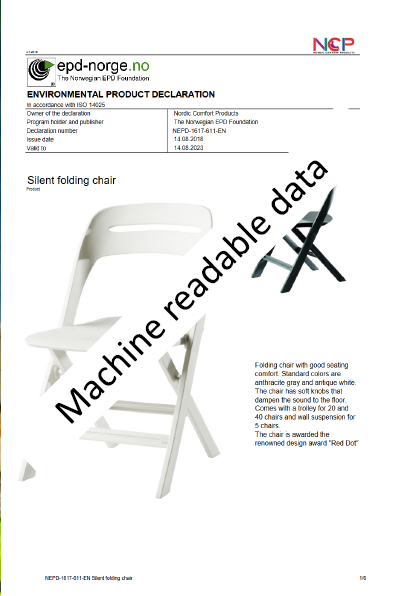EPD (Environmental Product Declaration) is a concise document that describes the environmental impact of a product or service.
The EPD provides us with a concise lifecycle-based account of a product or service, in which resource consumption and potential environmental impacts are presented. EPD accounts for what happens in your own company, with subcontractors, throughout life and at the end of its life cycle.
EPD informs about environmental properties in an objective, comparable and addible way.
 EPDs are:
EPDs are:
- Verified by an independent third party
- Standardised
- Comparable, since they are developed according to specific standards
- Publicly available
- Addable, results from EPDs can be put together to form the basis of environmental assessments for larger projects
- Machine Readable
EPD -provides information on:
- Use of resources (raw materials and energy)
- Emissions (to air, water and soil)
- Content of hazardous substances and impact on indoor climate
- Waste treatment and recycling.
EPD informs about environmental properties in an objective, comparable and addable way.
The EPD does not say that:
- The product is environmentally friendly
- Your product is better than its competitor
An LCA (Life Cycle Analysis) is the basis for developing an EPD.

A life cycle analysis assesses environmental and resource conditions throughout the product's life cycle, from "cradle to grave", preferably "cradle to cradle".
Using the same methodology and format to ensure simplification, credibility and comparability when purchasing.
EPD-Norge (www.epd-norge.no)
EPD-Norway verifies type III environmental declarations (EPD) and is a member of ECOPlatform. It is important for the business community that environmental information is provided in a standardized and objective manner, and that the conditions of competition are the same for Norwegian and foreign companies.
